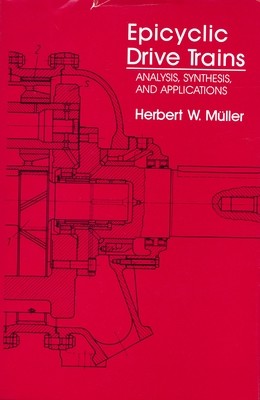
- We will send in 10–14 business days.
- Author: Herbert W Muller
- Publisher: Wayne State University Press
- ISBN-10: 0814316638
- ISBN-13: 9780814316634
- Format: 15.2 x 22.9 x 2.5 cm, kieti viršeliai
- Language: English
- SAVE -10% with code: EXTRA
Reviews
Description
This first English-language edition is a completely revised and expanded version of Die Umlaufgetriebe, published by the Springer-Verlag in 1971. It will be extremely useful to American engineers since it stresses the efficiencies of new and existing transmission designs and provides concise guide rules as well as worksheets. A thorough understanding of the sometimes difficult material is facilitated through the use of both schematic and symbolic diagrams. The book is profusely illustrated and analyzes many applications. These drives receive an unusually clear treatment because at Dr. Müller's discovery of their perfect analogy to the simple epicyclic drive trains.
Unified methods of analysis and synthesis of complex drives are employed throughout, suggesting that further simplifications may be possible through the use of a multivalued logic system which is analogous to the bivalent logic system of digital electronics. This book presents a clear and concise description of a multitude of revolving gear trains in terms common to all, whereas previous publications have been limited to treatment on interesting subproblems. Its well-reasoned definitions and classifications will aid engineers in the selection and design of the best drives for any given application.
EXTRA 10 % discount with code: EXTRA
The promotion ends in 21d.06:25:49
The discount code is valid when purchasing from 10 €. Discounts do not stack.
- Author: Herbert W Muller
- Publisher: Wayne State University Press
- ISBN-10: 0814316638
- ISBN-13: 9780814316634
- Format: 15.2 x 22.9 x 2.5 cm, kieti viršeliai
- Language: English English
This first English-language edition is a completely revised and expanded version of Die Umlaufgetriebe, published by the Springer-Verlag in 1971. It will be extremely useful to American engineers since it stresses the efficiencies of new and existing transmission designs and provides concise guide rules as well as worksheets. A thorough understanding of the sometimes difficult material is facilitated through the use of both schematic and symbolic diagrams. The book is profusely illustrated and analyzes many applications. These drives receive an unusually clear treatment because at Dr. Müller's discovery of their perfect analogy to the simple epicyclic drive trains.
Unified methods of analysis and synthesis of complex drives are employed throughout, suggesting that further simplifications may be possible through the use of a multivalued logic system which is analogous to the bivalent logic system of digital electronics. This book presents a clear and concise description of a multitude of revolving gear trains in terms common to all, whereas previous publications have been limited to treatment on interesting subproblems. Its well-reasoned definitions and classifications will aid engineers in the selection and design of the best drives for any given application.


Reviews